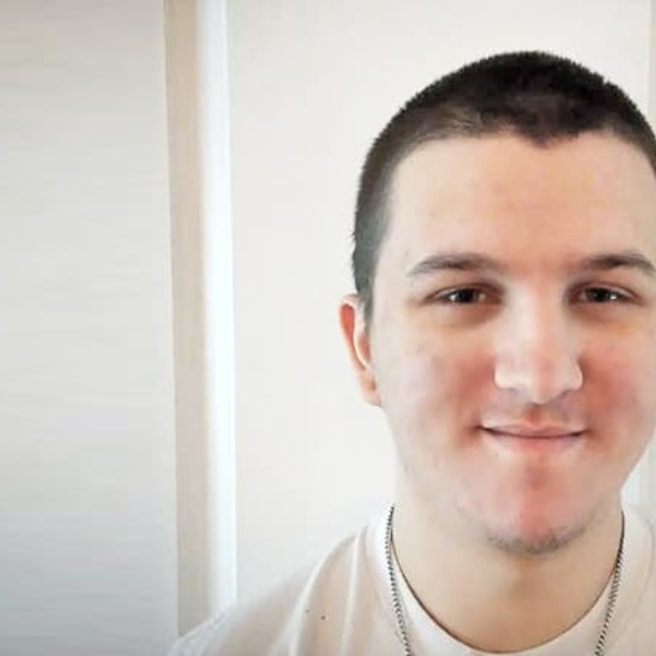What is pulmonary stenosis?
When the heart squeezes, the lower right chamber (right ventricle) pumps blood out and into the pulmonary artery, which then takes blood to the lungs. The pulmonary valve (also known as the pulmonic valve) is between the right ventricle and the main pulmonary artery. The pulmonary valve's job is to prevent blood from leaking back into the heart between beats.
A normal pulmonary valve is made up of three thin sections called leaflets. In pulmonary stenosis, two of the leaflets may be stuck together or too thick, or there may be less than three leaflets. When the pulmonary valve is too narrow, the heart must work harder to pump enough blood through the valve and to the body. Pulmonary stenosis can be mild, moderate, severe or life-threatening.
This condition is also called pulmonic stenosis or pulmonary valve stenosis. When the blockage is below the pulmonary valve because of too much muscle (muscular bundles), it’s called subpulmonic stenosis. When the stenosis is above the pulmonary valve – in the pulmonary artery itself – it’s called supravalvular pulmonic stenosis.
Signs and symptoms of pulmonary stenosis
Depending on the severity of the pulmonary stenosis, signs and symptoms may include:
- Fatigue
- Blue or purple tint to lips, skin and nails (called cyanosis)
- A heart murmur (an extra heart sound when a doctor listens to your child’s heart with a stethoscope)
- Chest pain or fainting
Testing and diagnosis of pulmonary stenosis
In rare cases, babies can be born with life-threatening pulmonary stenosis, which requires immediate medical attention. Severe cases of pulmonary stenosis are sometimes diagnosed before birth through the Fetal Heart Program at Children's Hospital of Philadelphia (CHOP).
CHOP’s Cardiac Center typically diagnoses pulmonary stenosis after a primary care doctor detects a heart murmur and refers a child to us. To confirm a diagnosis of pulmonary stenosis, some or all of these tests may be used:
- Pulse oximetry, which is a noninvasive way to check the amount of oxygen in the blood
- Chest X-ray
- Echocardiogram (also called an echo or ultrasound), in which sound waves are used to see the internal structure of the heart
- Electrocardiogram (ECG), which measures the electrical activity in the heart
- Cardiac MRI, which is a 3D picture of the heart’s structure
- Cardiac catheterization, during which a thin tube is inserted into the heart through a vein or artery in the leg to take measurements throughout the heart
Pulmonary stenosis can run in families, so be sure to tell your cardiologist if any other close family members have a heart murmur.
Treatment for pulmonary stenosis
Treatment for pulmonary stenosis will depend on your child’s heart anatomy and function. For children with mild pulmonary stenosis, treatment is not usually needed. However, if your child has moderate, severe or life-threatening pulmonary stenosis, treatment is needed and may include the following.
Cardiac catheterization
In addition to diagnostic testing, cardiac catheterization may also be used as a treatment. During cardiac catheterization, an interventional cardiologist will insert a thin tube (catheter) into a vein in the leg, then guide it to heart. The catheter will have a balloon on the end of it. The balloon will be briefly inflated to open up the narrow valve, then deflated and withdrawn. Sometimes, two catheters and balloons are used.
After a cardiac catheterization, older children will typically spend one night in CHOP’s dedicated post-catheterization recovery unit before returning home. After a few days of rest, most children can then return to normal activity. Newborns with critical conditions or children who are already inpatients at CHOP may stay in the hospital slightly longer, either in the Evelyn and Daniel M. Tabas Cardiac Intensive Care Unit (CICU) or the Cardiac Care Unit (CCU).
Surgery
In rare cases, surgery is needed to treat pulmonary stenosis. Surgeons will cut open or cut out the valve.
Surgery for for subpulmonic and supravalvular stenosis
Subpulmonic and supravalvular pulmonic stenosis do not get better with cardiac catheterization and may require surgery. Surgery for subpulmonic stenosis involves cutting out the extra muscles below the valve. Surgery for supravalvular pulmonic stenosis involves using a patch to make the pulmonary artery bigger.
CHOP’s highly experienced cardiac surgeons perform these surgeries regularly with positive outcomes.
Outlook for pulmonary stenosis
Today, most children with heart conditions like pulmonary stenosis go on to lead healthy, productive lives as adults. Research is also being done on innovative ways of treating pulmonary stenosis, including heart valve replacements made from living cells and other materials (tissue-engineered). A patient's new valve would be grown with their own cells on a biodegradable mesh. Tissue-engineered replacement valves are still in the research and development phase but are an exciting treatment possibility that may be available soon.
Follow-up care for pulmonary stenosis
All patients with pulmonary valve disease will need lifelong follow-up with a cardiologist.
Children with pulmonary stenosis require regular checkups with a pediatric cardiologist throughout their lives. Some children must also stay on medicine and may need to limit their physical activity.
As your child grows, blood may begin to leak through the abnormal valve. This is called pulmonary regurgitation or pulmonic insufficiency. The blockage can also come back in some children. If this happens, cardiac catheterization can be repeated if there isn't too much regurgitation. In severe cases, another surgery may be necessary.
As a group, children with complex congenital heart defects who have had open heart surgery as infants are at a higher risk for neurodevelopmental issues when compared to children without congenital heart defects. The Cardiac Center at CHOP created the Cardiac Kids Developmental Follow-up Program to provide evaluation, screening and clinical care for children with complex congenital heart disease who are at risk for neurodevelopmental problems.
At CHOP, our pediatric cardiologists work with pediatricians and follow patients until they are young adults. When your child reaches young adulthood, we can help with the transition to an adult cardiologist.
The Philadelphia Adult Congenital Heart Center, a joint program of CHOP and the University of Pennsylvania, meets the unique needs of adults who were born with heart defects.

Why Choose Us
Our specialists are leading the way in the diagnosis, treatment, and research of congenital and acquired heart conditions.
Resources to help
Cardiac Center Resources
We know that caring for a child with a heart condition can be stressful. To help you find answers to your questions – either before or after visiting the Cardiac Center – we’ve created this list of educational health resources.
Reviewed by Kathryn M. Dodds, RN, MSN, CRNP
Reviewed on 08/08/2024

